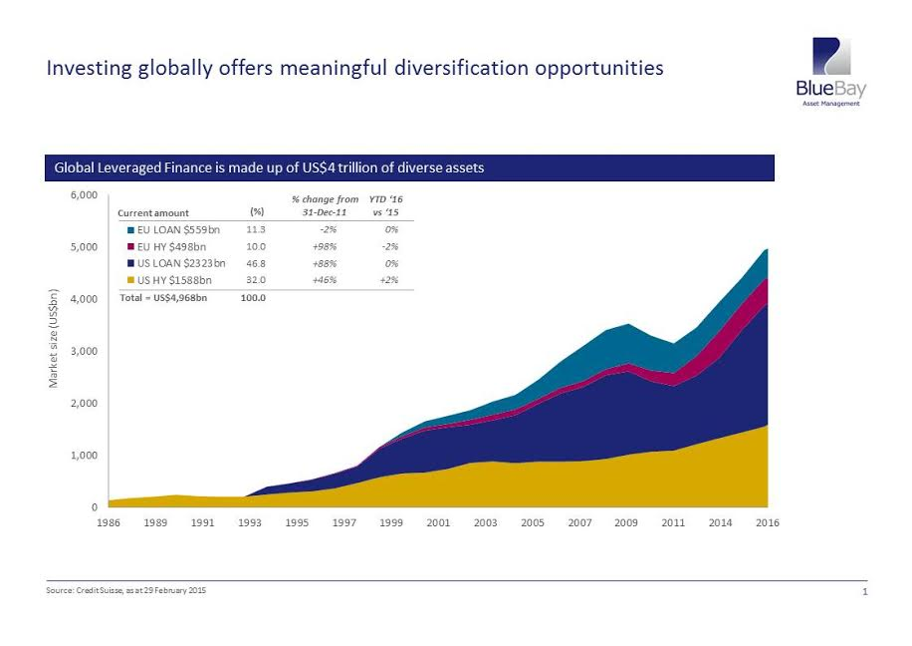Wealth Strategies
GUEST ARTICLE: Opportunities In High-Yield Debt?
.jpg)
What are the opportunities in high-yield credit? As wealth managers are only too aware, we are living in a low-return world, so any prospect of a better return will be seized. But there are no free lunches in markets.
The following guest article concerns the high-yield bond market, sometimes known in less delicate terms as “junk”, although that term might be misleading in terms of the quality issues concerned. This is an era characterised by low yields and wafer-thin, or even negative, interest rates. Some borrowers in the high-yield market have not had an easy time lately – think of some of the borrowers in the energy market, for example, in the wake of sharp falls to crude oil prices. The author of this article, Marc Kemp, an institutional portfolio manager for BlueBay Asset Management, says there remain opportunities in high-yield securities. The editors here are pleased to share these views with readers, invite responses, and do not necessarily share all the views of guest contributors.
Doing your credit homework
Global financial markets are currently dominated by risk and
uncertainty. We believe investment opportunities are masked by
fears of economic slowdown in China and of a US recession, the
low oil price and negative interest rates in Japan. In addition,
the dramatic fall in oil and commodity prices has kicked off the
default cycle in resource and energy-related names, notably
within the US high-yield market, (although we don’t believe this
is likely to result in contagion and a flood of defaults within
other sectors of the market). Nevertheless, within this
environment we believe there are attractive opportunities within
the high yield market, but investors must tread carefully and
look globally in order to find value.
In these challenging market conditions, central bank policy has commanded markets. The Bank of Japan, Swiss National Bank, and European Central bank (ECB) have all adopted negative interest rates; for the first time we have seen the yield on the 10-year Japanese government bond turn negative while the Japanese Ministry of Finance recently sold a five-year bond that pays back less than it was sold at.
Now the European government bond market seems to be following Japan’s lead. One of the fastest growing asset classes in Europe is negative yielding government debt. If the ECB cuts interest rates and increases quantitative easing then the 10-year German bund could move into negative territory. This is worrying for fixed income investors as they could be buying a bond with negative or zero income. However, just because there is no yield in core government fixed income does not mean that there is no yield in fixed income.
Balancing risks with reward
Some emerging market (EM) local currency denominated bonds are
offering double-digit yields such as Brazil (circa 14 per
cent) and Russia and Turkey (circa 10 per cent).This
highlights that there is yield if you are willing to look more
broadly, whilst taking on credit risk and swapping it for
interest rate or duration risk. In our view, high yield
offers a good balance. Although off the wider spreads the market
mentally is attuned to lower growth/lower profitability, if you
pick your spots there are assets that are less exposed to these
vagaries.
We are entering a new post QE environment characterised by volatility, and greater divergence in performance across and within asset classes. To generate positive net gains within this environment we believe investors need to return to basics and not just follow the flow of central bank liquidity; focusing not just on fundamentals, but also on value and diversification.
In our view, high-yield credit appears robust, particularly in Europe. However, as always there are risks and it’s important to carry out in-depth fundamental analysis to get credit and country selection right. We believe if you tread carefully, look globally, and focus on fundamentals and value there are attractive opportunities within global high yield.
Careful credit selection
In order to realise gains overall, we believe investors must
concentrate on being selective about which markets and assets
they invest in and accept that yields are lower. Investors need
to be cognisant and not reach for the excess yield
which might appear to be there and instead focus on
conserving the income which is available from high quality
assets.
There are some high-quality assets that offer long-term value; however, with the overhang from defaults likely to come in the US and with the general uncertainty of outlook for earnings as a whole, we do not believe we are in an environment where investors should be seeking excess risk in the bonds they buy. This is an environment in which to focus on preserving capital and making a small positive return over the course of the year; we are not in an environment where we expect to see substantial high returns.

